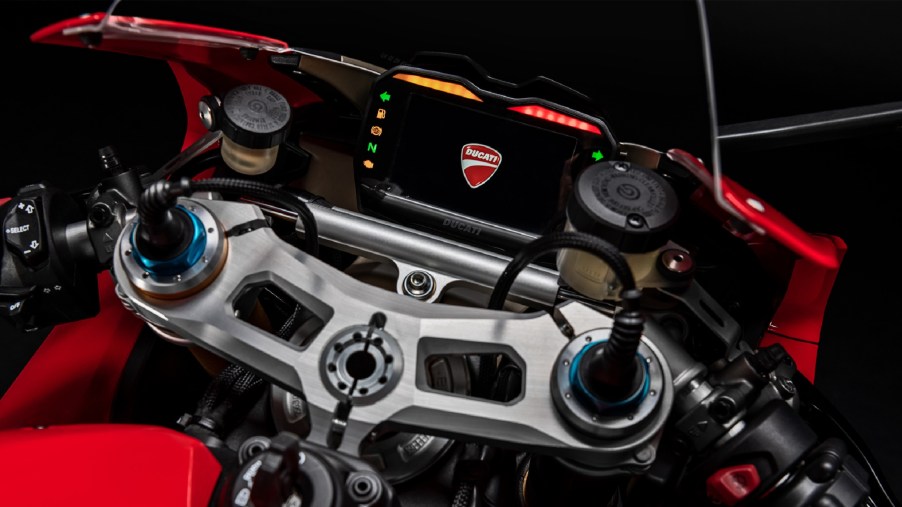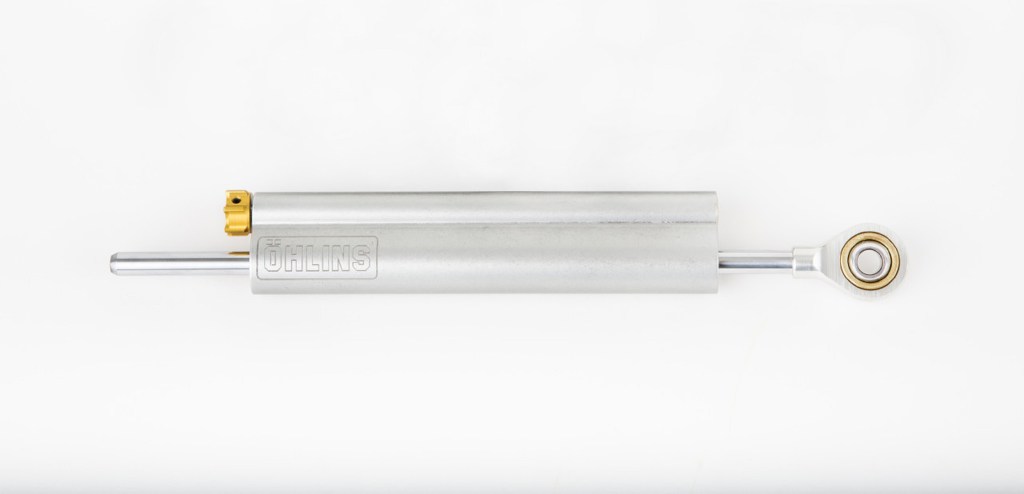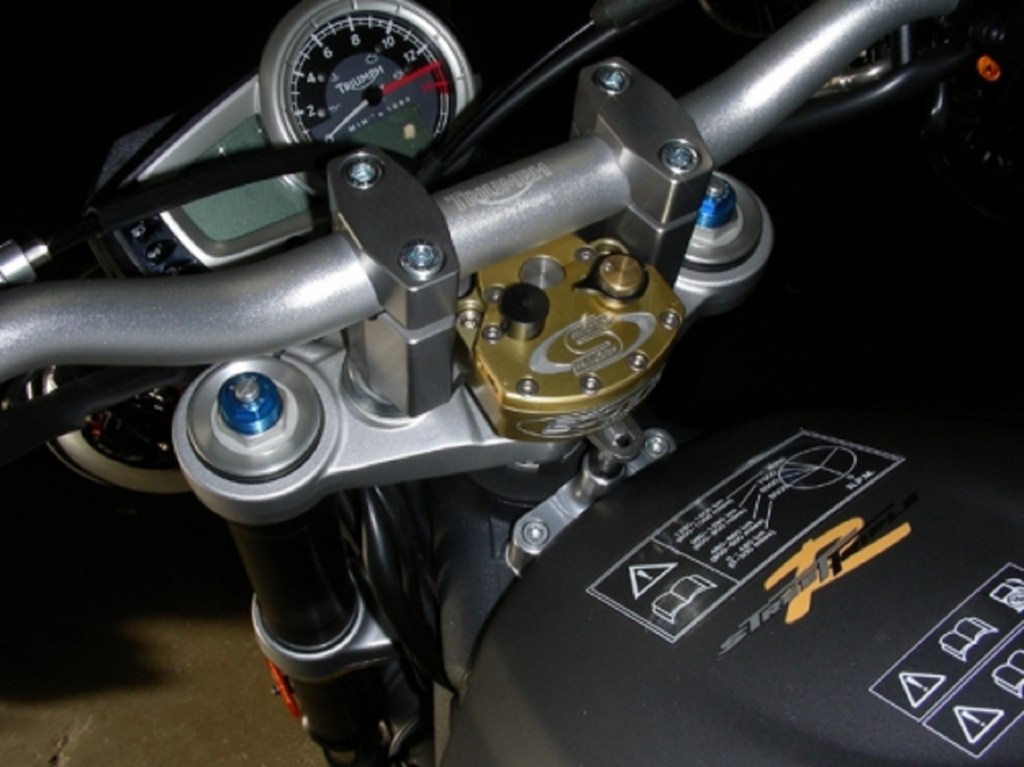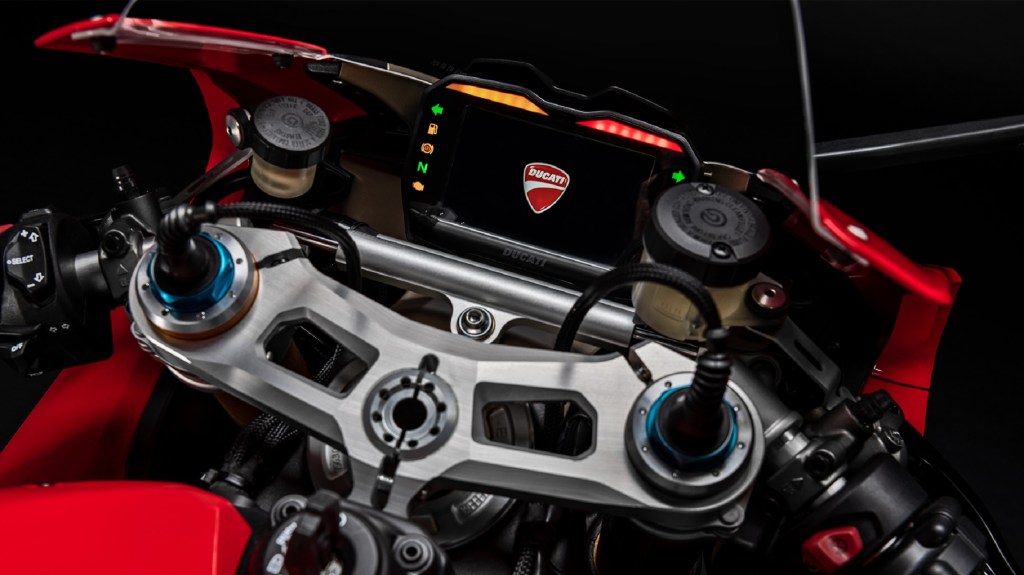
Your Motorcycle Might Need a Steering Damper
Changing things like the handlebars and wheels on your motorcycle isn’t always just about aesthetics. As with aftermarket mirrors, some modifications are as much about safety and comfort as they are about looks. Especially when it comes to handling-related accessories. And if you’re trying to improve your bike’s handling, one common recommendation is fitting a steering damper. But is it worth installing on your motorcycle?
What does a motorcycle steering damper do?

You’ll often hear steering dampers referred to as ‘steering stabilizers,’ RevZilla reports. These terms are synonymous, and both hint at what these devices do.
Although bikes don’t handle exactly as cars do, they do experience many similar handling problems. For example, a motorcycle can oversteer just like a car does. And bikes also have their own version of the infamous ‘death wobble’: the ‘tankslapper.’ In fact, the tankslapper is sometimes even called a death wobble, Cycle World reports.
It’s when your bike’s front tire is deflected or lifted airborne and regains traction at a significantly different angle than the rear one, Cycle World explains. The front tire then fights to center itself, causing your motorcycle to wobble and weave dangerously. Tankslappers can rip the handlebars from riders’ hands, or even cause them to fly off the bike in a high-side crash, Motorcyclist reports.
But even if you never experience a tankslapper, some motorcycles are more prone to wobbling and instability than others. Sportbikes, for example, have short wheelbases with steeply-raked forks, MotoAmerica reports. That makes them agile, but it also makes them more unstable, MCN reports. Especially since they also typically have stiffer suspension, which makes them more susceptible to rough-pavement-induced tankslappers.
This is where a steering damper comes in. Just like a motorcycle’s forks and shock(s) control vertical motion, steering dampers control lateral (side-to-side) motion, Motorcyclist explains. So, if you do hit a bump, the steering stabilizer absorbs the impact before it disturbs your handling. Essentially, it’s like a shock absorber for your steering, RideApart explains.
How much does it cost and how can you install it?
Speaking of shock absorbers, many modern steering dampers resemble them in form. That’s because, at their most basic, that’s how steering dampers work: sliding a piston through oil, MCN and RevZilla explain. These are linear dampers, and they can be mounted in several different ways. Some are installed on the head tube itself, while others are mounted mid-way along the forks. And some linear steering dampers are installed on the frame.
Linear steering dampers aren’t the only option, though. Instead of using a piston, rotary steering dampers force oil through a series of passages to control motion. They have to be mounted on your bike’s triple clamp or handlebar mount. However, they’re also more compact than linear stabilizers.

As far as price goes, that depends on what kind of features you want on your steering damper. A basic non-adjustable one, complete with the necessary installation hardware, typically runs around $200-$275, J&P Cycles reports. But if you want an adjustable one from a manufacturer like Ohlins or Scott’s Performance, you’re looking at about $500 at a minimum. A Scott’s Performance rotary steering stabilizer kit for my 2012 Triumph Street Triple R, for example, costs $575.
Is a steering damper necessary?

Steering dampers aren’t a recent invention. Although the earliest ones weren’t hydraulic, racing bikes in the mid-1960s often came with adjustable steering stabilizers, Cycle World reports. However, nowadays, they’re becoming increasingly common on street bikes, whether as standard features or factory options, Motoress reports. The Ducati Panigale V4 S, for example, has an electronically-controlled Ohlins damper.
And sportbikes aren’t the only kinds of motorcycles that can get steering stabilizers. Dirt and motocross bikes use them, too, Cycle World reports. There are even dampers designed for cruisers, as well as scramblers and standards, Cycle World and TEC report. So, should you put one on your bike?
A steering damper doesn’t just lower the chances for a tankslapper. It also absorbs vibrations from the road, increasing your long-distance comfort, RideApart reports. Plus, as a stabilizer, it decreases the amount of steering correction you’ll have to do. But, on the downside, it also makes low-speed maneuvers require more effort, RevZilla reports. Electronic ones cut down on this, but they’re also more expensive, Motorcyclist reports.
It’s worth noting that, as with any piece of equipment, steering dampers are no replacement for proper training. And if your bike is wobbling even in a straight line, that’s because of improper maintenance or broken parts, Motorcyclist reports. A stabilizer won’t help with that.
In terms of maximum benefits, sportbikes typically see the most from steering damper installation. Cruisers, with their long-wheelbase, relaxed-rake designs, are inherently more stable, so they don’t really need aftermarket dampers. But, even if you’re not on a racetrack, steering dampers can provide some extra peace of mind.
Follow more updates from MotorBiscuit on our Facebook page.


